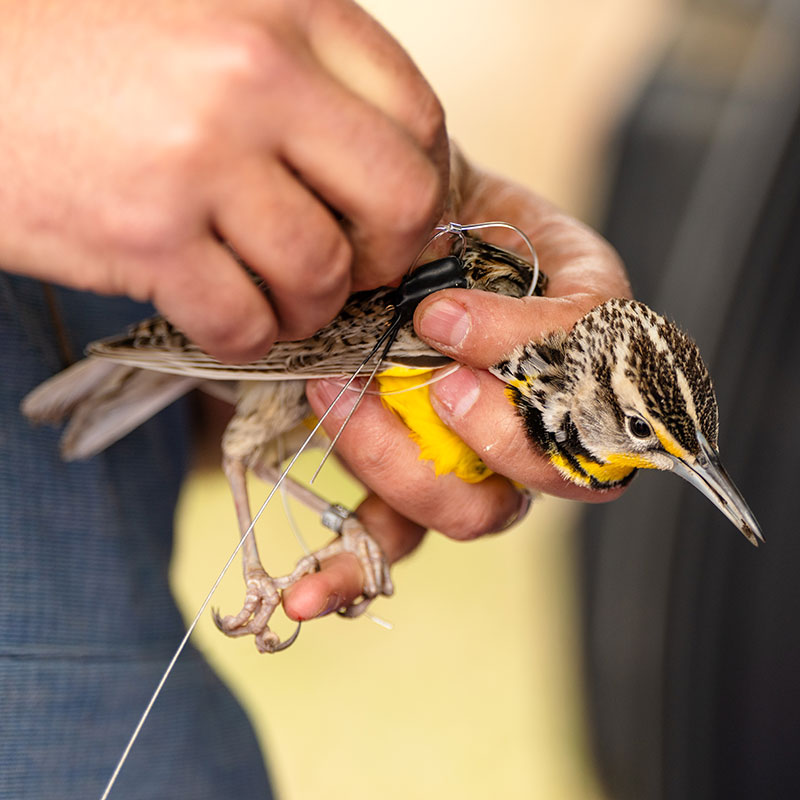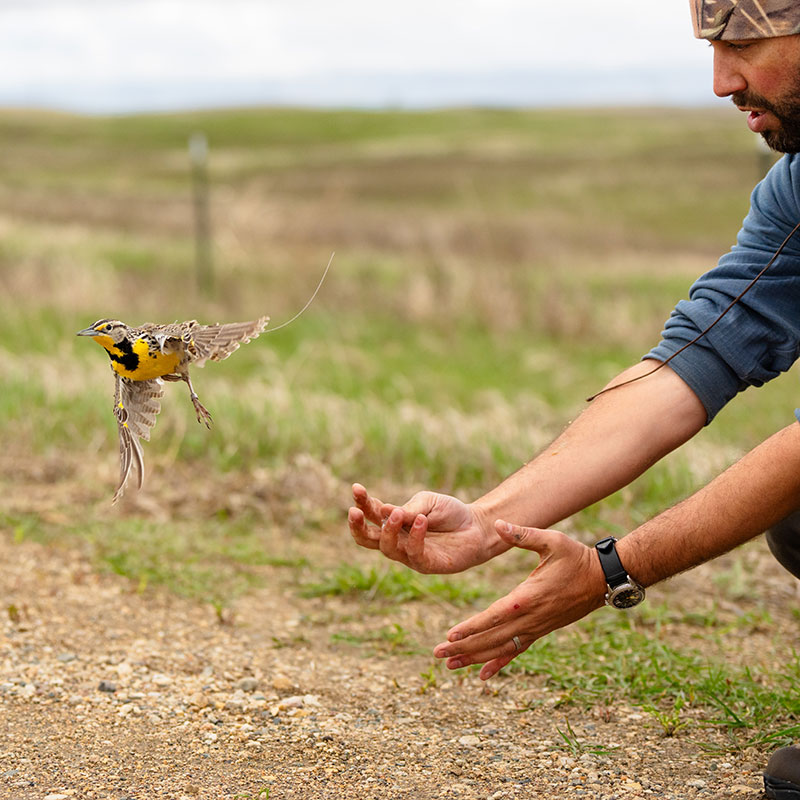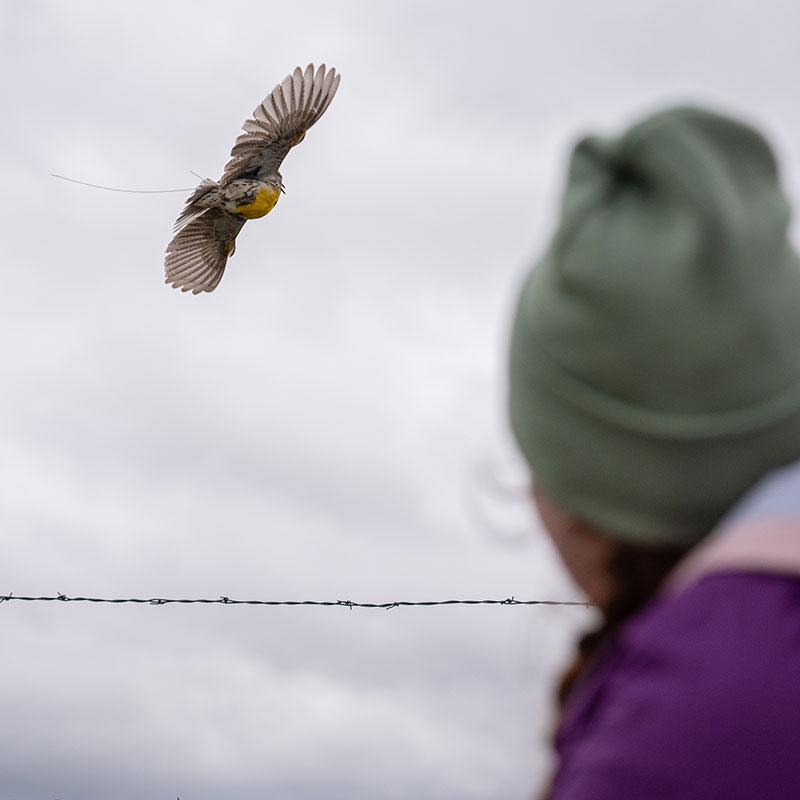Study Follows State Bird
Ron Wilson
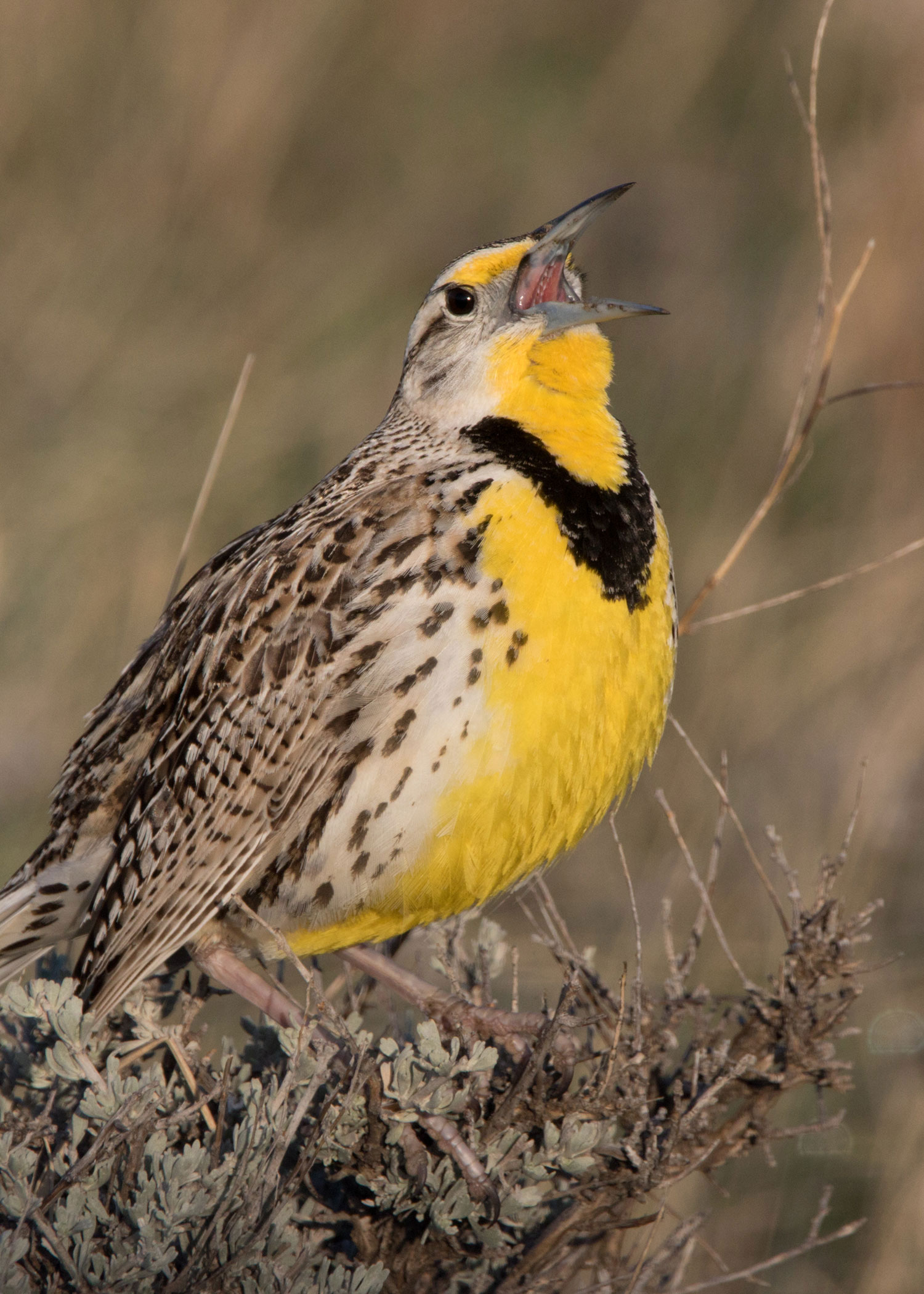
Western meadowlarks arrive in North Dakota in early March and then turn and wing it south sometime in late October or early November.
That’s what scientists tell us about our state bird, an appealing songster with a recognizable call and unmistakable appearance.
Yet, compared to all that scientists do know about this common prairie species, there is some that they don’t, which is why researchers caught and fitted six meadowlarks with small GPS satellite backpacks in early May to track these birds throughout their movements across the entire year.
“Meadowlarks are extremely charismatic and anyone who’s spent time in grasslands throughout the country knows meadowlarks. They’re really an excellent symbol for our nation’s grasslands,” said Andy Boyce, research ecologist for the Smithsonian Migratory Bird Center and the Smithsonian Great Plains Science Program, based in Missoula, Mont. “Surprisingly enough, even though they’re very well known to the average person, we don’t know really anything about their migratory ecology, which was one of the reasons for using meadowlarks in this study.
“Another reason is that they’re just a really good indicator of grassland habitat quality. They’re not the pickiest. I work with some birds like Sprague’s pipits, and they need 100,000 acres of native grass or else you won’t find them,” he added. “Meadowlarks are a little bit more flexible than that, but they won’t tolerate really degraded habitat. So, if you have meadowlarks using certain areas, that’s a good indication that’s valuable grassland habitat that needs protecting.”
Aside from the Smithsonian Institute, players in the study include the North Dakota Game and Fish Department, University of North Dakota and the Meadowlark Initiative, a statewide strategy that teams landowners, conservation groups, scientists and others to enhance, restore and sustain native grasslands in North Dakota.
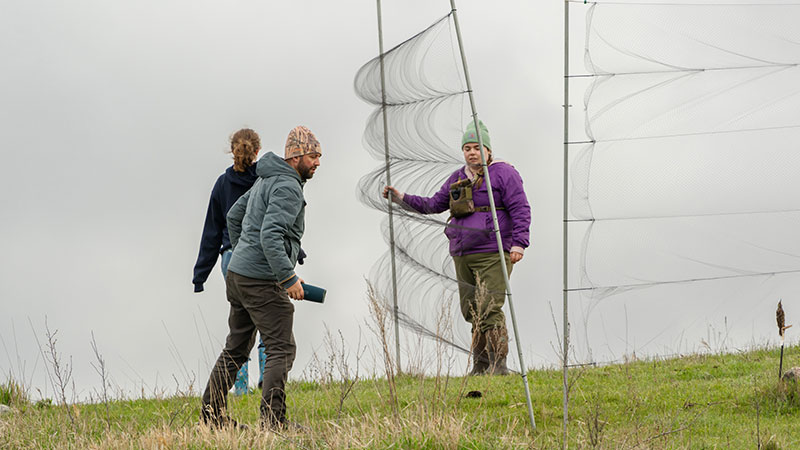
Researchers setting up mist nets.
Sandra Johnson, Game and Fish Department conservation biologist, said the study is funded by the Department through a state wildlife grant. The study will run through 2025.
Like the substantial loss of native grasslands in the state, roughly 75% over time, Johnson said there is a need to learn more about meadowlarks as their population is also on the decline.
“Western meadowlarks have been declining about 1% per year. I often get calls from people saying they just don’t see and hear meadowlarks like they used to,” Johnson said. “That stems from the fact that grasslands are being lost in North Dakota and elsewhere.”
To learn where these birds spend their time throughout the full annual cycle, the GPS technology is critical as it gives researchers a fix on their whereabouts about two times per week.
Boyce said the first thing researchers look for after releasing a GPS tagged meadowlark is to make sure the backpack harness doesn’t encumber the wings and hinder the bird’s ability to fly.



